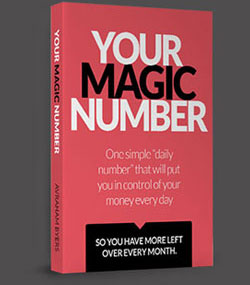We’re into a fresh new year which, of course, means a lot of people have started dieting this week.
The health benefits of shedding some extra pounds are obvious. What’s hidden, however, are the financial costs of a healthy diet. I know it from personal experience.
Three years ago I joined a weight loss program, and lost 40 pounds. The program cost was $1,200 for 6 months.
When I signed up, I thought this was going to be my only cost. Soon after though, I was surprised to discover the diet came with two significant hidden costs that I hadn’t anticipated or planned for – the cost of healthy food, and the new wardrobe I had to buy.
The cost of healthy food
A recent study from Harvard showed that a healthy diet costs $2,000 a year more than an unhealthy one, for an average family of four ($500 per person).
In truth, I thought the number should be much higher. My own average weekly grocery shop has gone up by almost $80 since I started my diet. That’s an annual cost of over $4,000.
Fresh foods are more expensive than processed foods. The sheer volume of vegetables you need to consume on a actual healthy weight-loss diet is no small feat, and low-fat proteins can also cost a lot of money. (If you’re buying organic, the USDA estimates you can add on an additional 10% to 30% on top of that, as well.)
Your new wardrobe
Then, as your pounds fall off, so will your clothes, making it necessary to either alter your current wardrobe, or buy a new one.
I personally started to swim in my clothes, and the pressure to buy a new wardrobe started to build, after losing my first 20 pounds. I knew that I still had some distance to go in my weight loss journey however, so I put off buying new clothes, and instead decided to alter what I had.
After six months, I reached my “set-point.” In the program I was using, this is the point where you stop losing weight. For me, it was a green light to go ahead, and buy some new clothes. Even with my simple wardrobe though, I found I still ended up spending almost $1,500 on new threads.
Depending on your dressing needs, plan to have a “wardrobe fund,” that will allow you to buy, at least the basics, for two seasons – spring, and the fall.
Where is all this money coming from?
When you start on a new and exciting weight loss journey, it’s incredibly tempting to say “let me lose the weight, and I’ll figure it out the finances later.”
Trying to eat healthier is difficult enough though, without adding financial sabotage. So let’s get to the point: If you’re already maxed out, or spending more than you earn, you need to budget, and figure out how you’re going to pay for these new, additional expenses.
If you plan to carry that additional cost on your 19.99% credit card, a $2,000 diet will actually work out to approximately $17,000 over the next five years.
The bottom line
As a personal financial trainer, I want you to succeed in the effort, quite simply because getting sick will cost you money. A healthy diet is probably one of the best things you can do for yourself, for your health, and for your finances.
I always say “don’t go cheap on your health because it will cost you more in the long run.” This is not just a cute saying. In Canada, Sun Life Financial says almost 40 per cent of Canadians will face financial hardship after suffering a serious health event. Those between 45 and 54 will be hit hardest by “unforeseen” heath care costs.
So eat healthy! You can do it, and it’s worth it to everyone involved for you to try. To help stay on track, however, plan for those additional costs. That $17,000 credit card bill is more than enough to set off an emotional eating response, no matter how strong your will power is today.
So this new habit change doesn’t derail your other self-improvements underway too (hello, debt reduction), you need to plan for the cost.



Comments are closed.